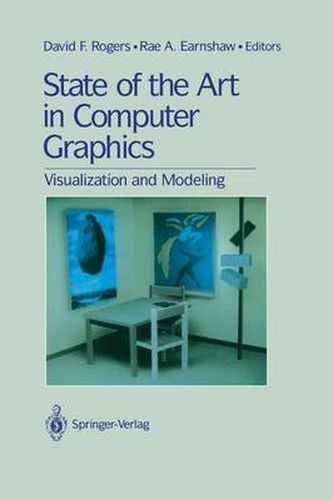Readings Newsletter
Become a Readings Member to make your shopping experience even easier.
Sign in or sign up for free!
You’re not far away from qualifying for FREE standard shipping within Australia
You’ve qualified for FREE standard shipping within Australia
The cart is loading…






This title is printed to order. This book may have been self-published. If so, we cannot guarantee the quality of the content. In the main most books will have gone through the editing process however some may not. We therefore suggest that you be aware of this before ordering this book. If in doubt check either the author or publisher’s details as we are unable to accept any returns unless they are faulty. Please contact us if you have any questions.
Today one of the hardest parts of computer aided design or analysis is first modeling the design, then recording and verifying it. For example, a typical vehicle such as a tank, automobile, ship or aircraft might be composed of tens of thousands of individual parts. Many of these parts are composed of cylinders, flats, and simple conic curves and surfaces such as are amenable to modeling using a constructive solid geometry (CSG) approach. However, especially with the increasing use of composite materials, many parts are designed using sculp tured surfaces. A marriage of these two techniques in now critical to continued development of computer aided design and analysis. Further, the graphical user interfaces used in most modeling systems are at best barely adequate to the required task. Critical work on these interfaces is required to continue pushing back the frontiers. Similarly, once the design is modeled, how are the varied and diverse pieces stored, retrieved, and modified? How are physical interferences prevented or eliminated? Although considerable progress has been made, there are still more questions and frustrations than answers. One of the fundamental problems of the 1990s is and will continue to be modeling. The second problem is interpretation. With the ever increasing computational power available, our ability to generate data far exceeds our ability to interpret, understand, and utilize that data.
$9.00 standard shipping within Australia
FREE standard shipping within Australia for orders over $100.00
Express & International shipping calculated at checkout
This title is printed to order. This book may have been self-published. If so, we cannot guarantee the quality of the content. In the main most books will have gone through the editing process however some may not. We therefore suggest that you be aware of this before ordering this book. If in doubt check either the author or publisher’s details as we are unable to accept any returns unless they are faulty. Please contact us if you have any questions.
Today one of the hardest parts of computer aided design or analysis is first modeling the design, then recording and verifying it. For example, a typical vehicle such as a tank, automobile, ship or aircraft might be composed of tens of thousands of individual parts. Many of these parts are composed of cylinders, flats, and simple conic curves and surfaces such as are amenable to modeling using a constructive solid geometry (CSG) approach. However, especially with the increasing use of composite materials, many parts are designed using sculp tured surfaces. A marriage of these two techniques in now critical to continued development of computer aided design and analysis. Further, the graphical user interfaces used in most modeling systems are at best barely adequate to the required task. Critical work on these interfaces is required to continue pushing back the frontiers. Similarly, once the design is modeled, how are the varied and diverse pieces stored, retrieved, and modified? How are physical interferences prevented or eliminated? Although considerable progress has been made, there are still more questions and frustrations than answers. One of the fundamental problems of the 1990s is and will continue to be modeling. The second problem is interpretation. With the ever increasing computational power available, our ability to generate data far exceeds our ability to interpret, understand, and utilize that data.